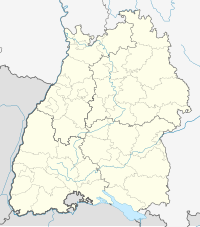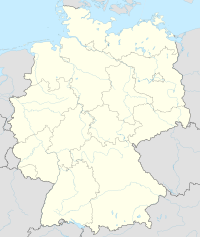This article needs additional citations for verification. (December 2012) |
| Hohenstaufen Castle | |
|---|---|
| Hohenstaufen, Göppingen, Germany | |
 View from the castle ruins | |
| Coordinates | 48°44′35″N 9°42′58″E / 48.743°N 9.716°E |
| Type | Castle |
| Site information | |
| Open to the public | Yes |
| Condition | Ruin |
| Site history | |
| Built | 1050–1079 |
| In use | 1079–1525 |
| Materials | Stone |
| Demolished | 1525 |
| Battles/wars | Peasants War |
Hohenstaufen Castle (German: Burg Hohenstaufen) is a ruined castle in Göppingen in Baden-Württemberg, Germany. The hill castle was built in the 11th century, on a conical hill between the Rems and Fils rivers (both tributaries of the Neckar) in what was then the Duchy of Swabia. It was the seat of the Staufer (Hohenstaufen) dynasty, the Dukes of Swabia for the period of 1079–1268, with three Holy Roman Emperors during 1155–1250. The castle was destroyed in the German Peasants' War of 1525.
Hohenstaufen Castle can be found on Hohenstaufen Mountain, 684 m (2,244 ft) above sea level. The word Stauf means "drinking vessel" (beaker or cup) and refers to the conical shape of the mountain.

